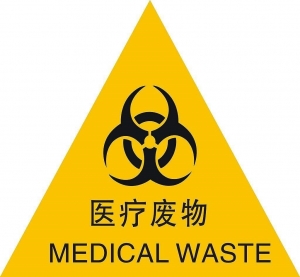At present, the treatment methods of medical waste mainly include sanitary landfill method, high temperature incineration method, pressure steam sterilization method, chemical sterilization method, electromagnetic wave sterilization method, plasma method, dry heat sterilization method, pyrolysis method, and the like.
Sanitary landfill method
Sanitary landfill method is the final disposal method of medical waste. Its principle is to bury garbage in the ground and decompose it into harmless substances through long-term decomposition of microorganisms. If the landfill system of medical waste does not have anti-seepage measures, various toxic substances, pathogens, and radioactive substances will seep into the soil with rainwater, and harmful substances will enter the human body through the food chain, endangering human health. Therefore, the sanitary landfill needs to be scientifically selected and laid with an anti-seepage layer using clay, high-density polyethylene, and other materials. Landfill gas collection and output pipelines must be set up. Therefore, the landfill treatment method must be used very carefully. Strict pretreatment of medical waste in accordance with relevant regulations.

High-temperature incineration
Medical waste is mainly composed of organic hydrocarbons, contains more flammable components, has a high calorific value, and it is completely feasible to use incineration. Incineration is a chemical process that is deeply oxidized. Under the action of a high-temperature flame, the medical waste in the incineration equipment is dried, ignited, and incinerated to convert it into residues and gases. The source of infection in medical waste And harmful substances can be effectively destroyed during the incineration process. The incineration technology is suitable for various infectious medical wastes. During incineration, a high and stable furnace temperature, good oxygen mixing conditions, sufficient gas retention time, and other conditions are required. Gas and residues are detoxified.
Chemical disinfection method
The essence of the chemical disinfection method is to mix the crushed medical waste with a certain concentration of disinfectant (sodium hypochlorite, peroxyacetic acid, glutaraldehyde, ozone, etc.) and ensure that it has sufficient contact area and time with the disinfectant. Organic matter is decomposed and microorganisms are killed during the disinfection process. The maximum contact between disinfectant and medical waste is a prerequisite to ensure the treatment effect. The use of rotary crushing equipment improves the degree of crushing and ensures that the disinfectant can penetrate it. Chemical disinfection is suitable for the treatment of liquid medical waste and pathological waste. Recently, it is also gradually used for the treatment of medical waste that cannot be sterilized by heating or wetting.
High-temperature pyrolysis incineration
The principle of high-temperature pyrolysis method is to heat the organic components of medical waste to 6OO ~ 900 ~ C under oxygen-free or oxygen-depleted conditions, use thermal energy to break the compound bonds, and convert large molecular weight organic matter into flammable gas. Process of liquid fuel and coke. The gas produced by pyrolysis mainly contains hydrogen, methane, carbon monoxide, carbon dioxide, and other hydrocarbons and volatile organic compounds.


